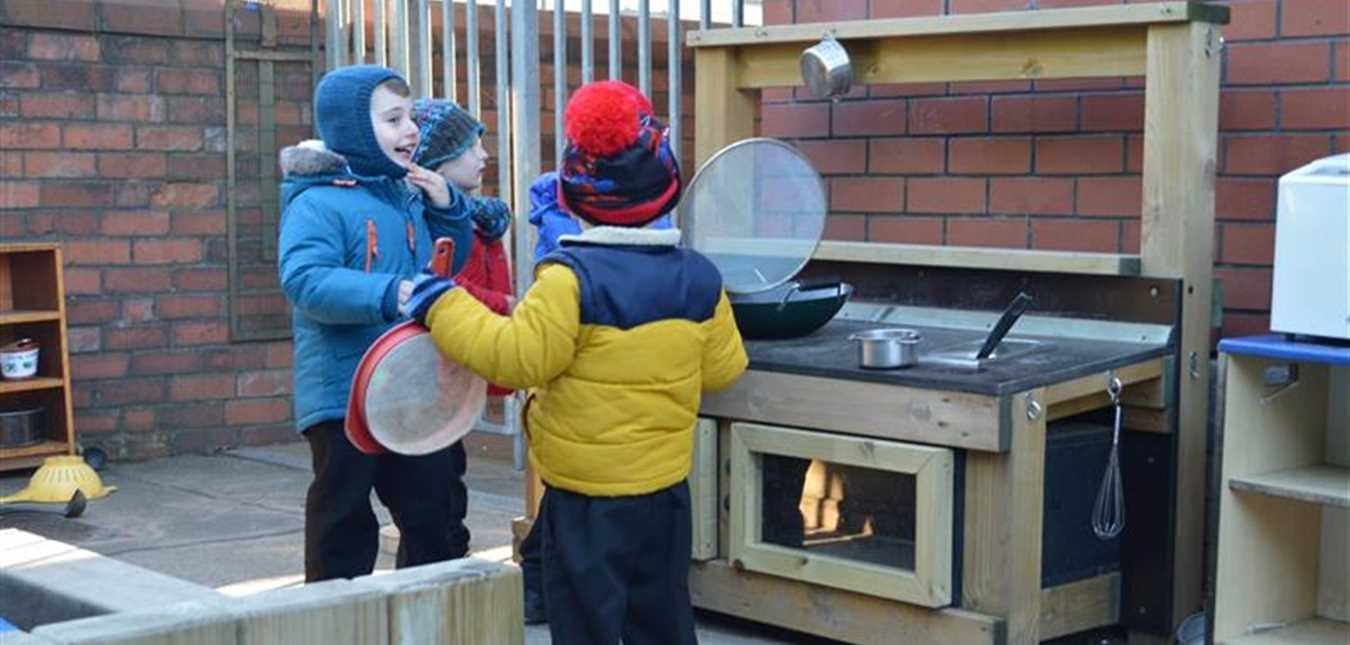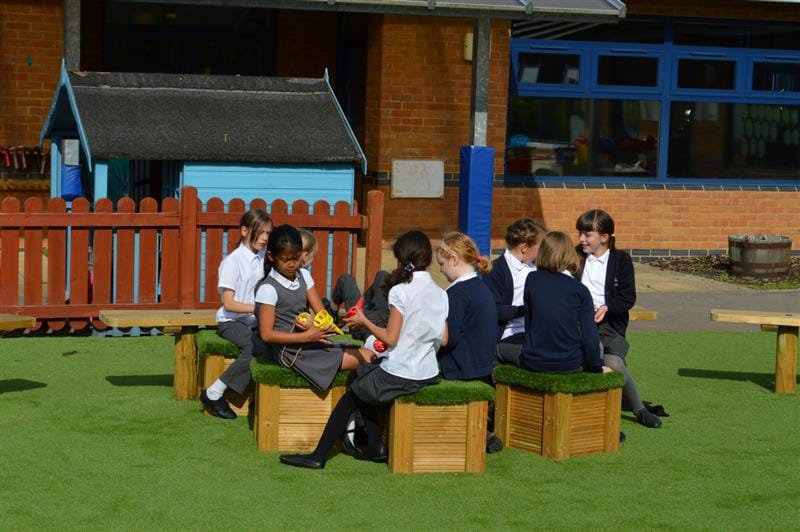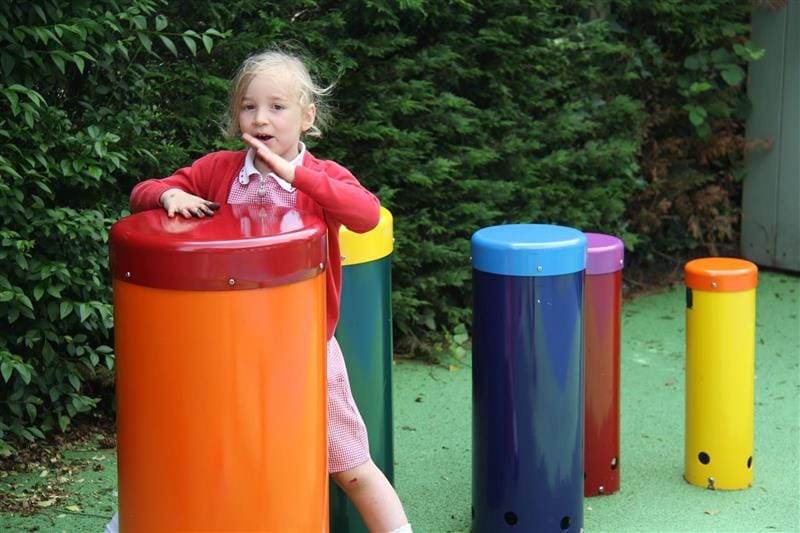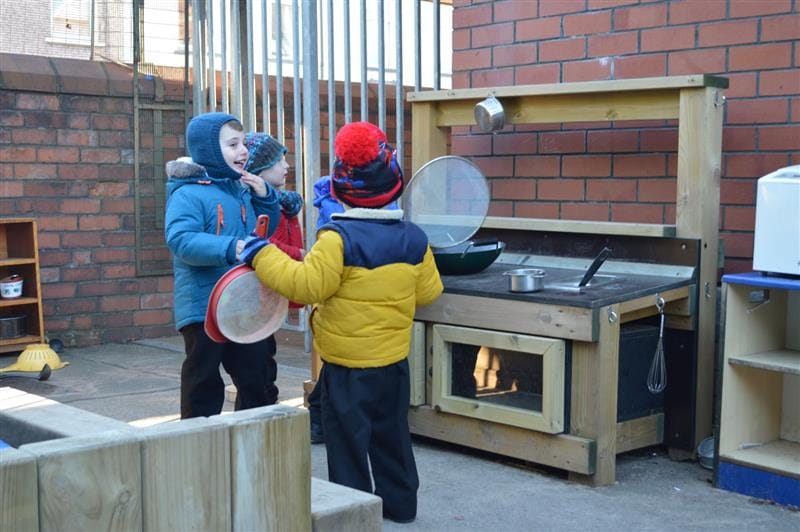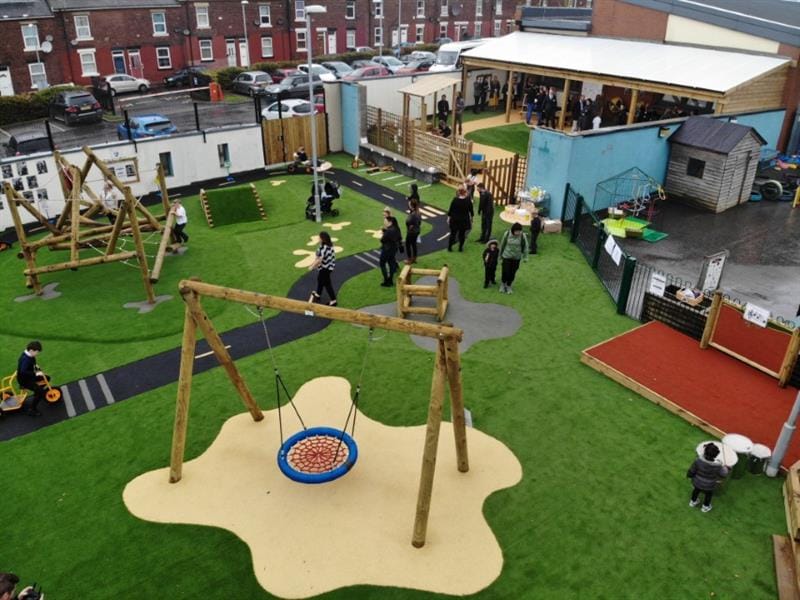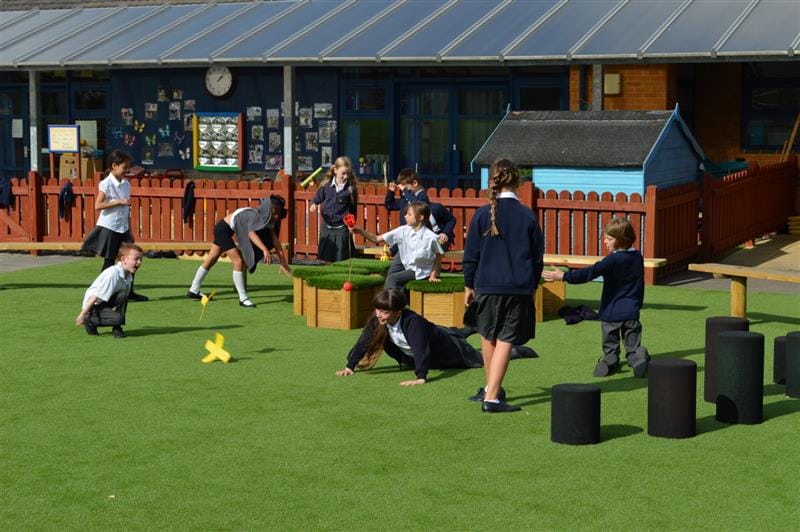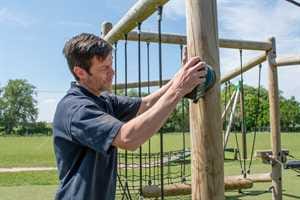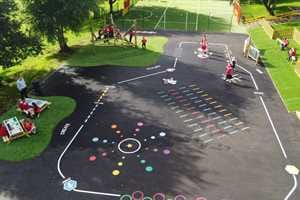
Playground Design
Design a play therapy space to support children with autism
At least 1 in every 100 people in the UK have autism so you will most likely have met someone with autism at your school.
The National Autistic Society is the leading UK charity for autistic people (including those with Asperger Syndrome) and their families. They provide information, support and pioneering services, and campaign for a better world for autistic people.
In support of their campaign, we are examining the benefits of outdoor learning and outdoor play for children with autism. We look at how schools can design their outdoor learning spaces and playgrounds specifically to support children with autism.
Research vs Observation
There has not been a great deal of scientific research into the benefits of outdoor learning versus indoor learning for children with autism specifically, although extensive worldwide research points to the many benefits of outdoor play and learning for all children in terms of health, wellbeing and overall learning and development.
One thing we do have to go by however, is the wealth of knowledge and first hand experiences and observations of teachers and support workers who work with children with autism every day.
Many have commented on how they have seen real improvements when autistic children are engaged in learning in one form or another through outdoor play.
A study in 2010 to examine the benefits of outdoor experiences for children with autism was conducted by interviewing teachers, parents and volunteer workers as to how they perceived the benefits of taking a child with autism outside to learn.
The main benefits that they reported were improved physical activity, better social interactions and communication, and in some cases that child specific sensitivities decreased when the child spent more time outdoors. That’s enough to make us sit up and take note.
The benefits of outdoor play for Autism
Autism, or Autism Spectrum Disorder, is a pervasive neurological developmental disorder characterised by impairments in social interaction and communication skills, sensory integration and repetitive behaviour patterns. It affects the way that children perceive and process their world and symptoms vary greatly from person to person.
When it comes to communication, around 40-50% of children with autism are either non-verbal or have difficulties participating in conversations.
It is hard for them to read facial expressions or anticipate what somebody else might be feeling.
They can also struggle to express their own needs and may become isolated and detached from others. Many children with autism suffer from Sensory Integration Dysfunction, which includes sensitivity to sensory stimuli such as sound, taste, smells, sights and textures.
Some may be over-sensitive to the feel of different textures such as fabric against their skin or grass under their feet.
Others may be under-sensitive to pain and discomfort and struggle to protect themselves from injury.
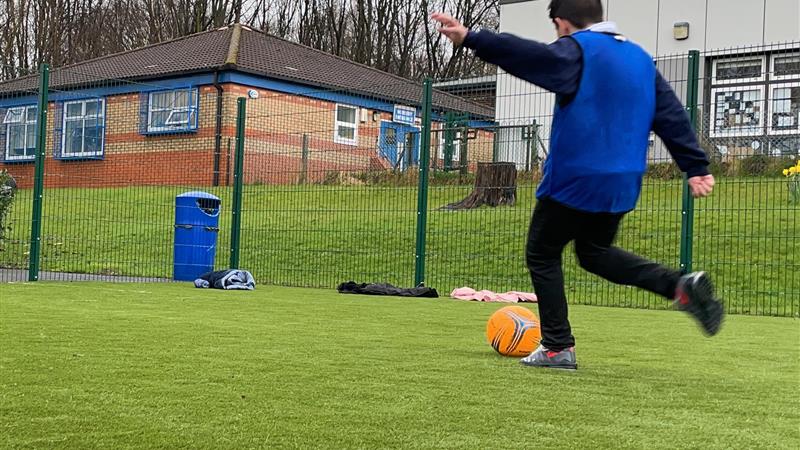
Often children with autism cannot filter input from different sources, so they experience everything at once and it’s overwhelming for them.
Repetitive behaviour patterns are also common for children with autism, whether repetitive body movements, the constant need to follow certain routines or fixation on organising items in a certain way.
With all of this in mind, what it is important is that we find more and better ways of supporting children with autism throughout their learning, being aware of their needs, guiding them through some of the challenges that they face every day and helping them to develop their own independence.
It’s about adapting learning environments so that they can get the most out of them, and being flexible enough to move learning to an outdoor environment if that’s what works best for them. Teachers are saying that daily time spent outside is changing the way that children learn and behave.
Their observations have shown that outdoor learning spaces can play a huge part in encouraging children with autism to engage, to learn and consequently to be happier and healthier as individuals.
The confines of an indoor classroom can often feel formal and pressurised. Children don’t have the space they need to let off steam or to relax into the task in hand. The outdoors offers children a sense of space and freedom.
It offers an alternative learning environment for autistic children who are more comfortable following their own methods, where they can more comfortably explore new things and be exposed to new learning opportunities.
Product Spotlight
Teachers have reported cases of autistic children who are non-verbal, for example, spelling out their name with twigs on the floor for the first time after watching other children building structures outside. This sort of natural environment creates a foundation upon which children can be motivated, engaged and continue to grow.
It is through first hand experiences which capture a child’s attention and gain their interest that they can build up their learning in layers. Building on observations and experiences outdoors, children are keener to record their experiences and literacy and attention can gradually improve.
Outdoor learning environments offer wonderful opportunities for more “messy” play, from sand and water tables to gardening, digging and exploring wildlife. On a typical day EYFS children can be found pouring and splashing water, hunting for mini-beasts, making mud pies, digging and scooping sand and generally exploring textures and getting their hands dirty.
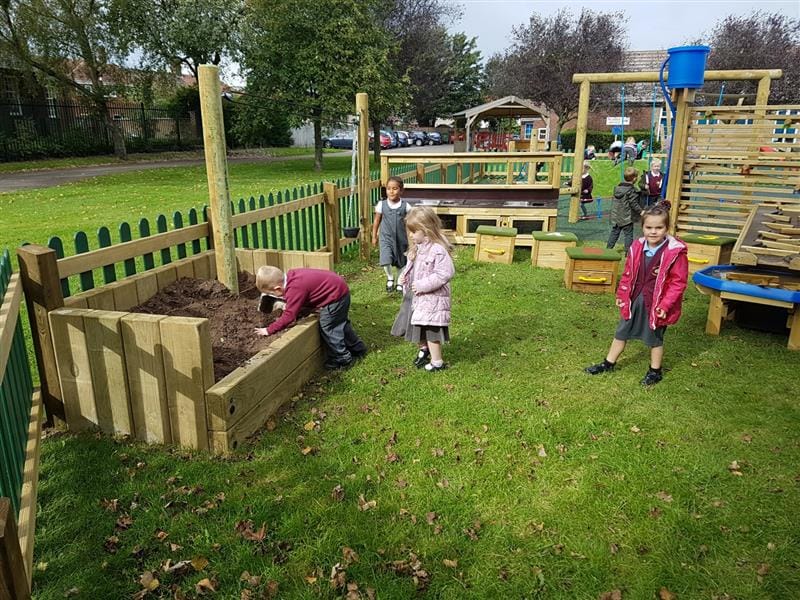
This doesn’t change much at Key Stage 1 or Key Stage 2, it’s just that the play becomes more advanced and technical! Autistic children who tend to be solitary will at first just observe, and move on to play alongside if not with other children.
They learn through observing and mimicking. Those who are sensitive to sensory stimuli gradually learn to become more comfortable playing about with different textures as this becomes a regular and normalised activity.
One of the more obvious benefits of outdoor play is the benefit of physical activity as children get outside and move their bodies. It’s good for their health and fitness and helps to reduce obesity. By moving around the playground whether running and climbing or just walking around the different activities, children are exercising.
Muscle tone, balance and strength are often lower in children with autism so it’s important that they have regular opportunities for physical activity which will naturally work their muscles, encourage them to work on some gross and fine motor skills, and improve their physical health. It’s also a good way of expending energy which can help them to become calmer.
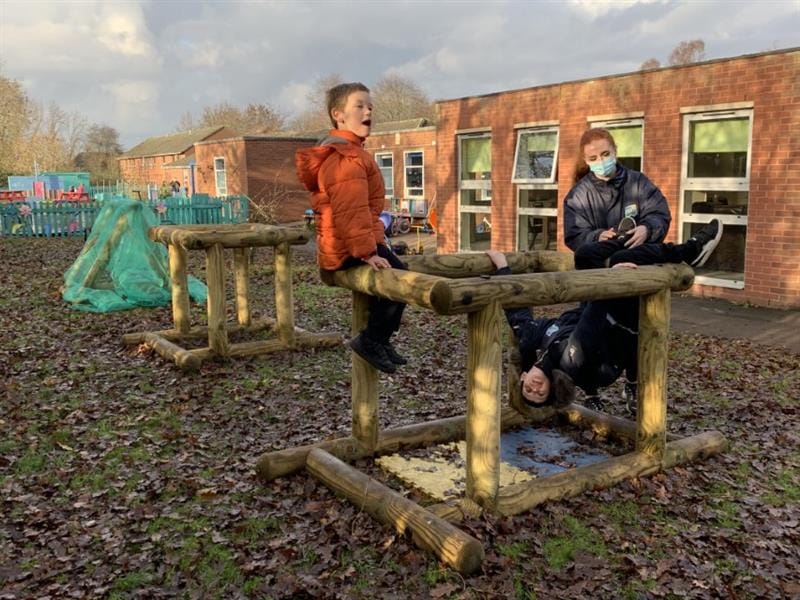
Attention Deficit Hyperactivity Disorder (ADHD) is common in children with autism. If a child has ADHD, then they experience significant difficulties with hyperactivity, impulsiveness and a poor attention span.
Research on the physical benefits of exposure to nature has highlighted that time spent outdoors can help fight ADHD, and psychologists have linked contact with nature to restored attention, recovery from mental fatigue and enhanced mental focus.
Studies have shown that children with ADHD have a greater ability to focus immediately after spending time outdoors in nature, and experience shorter recovery periods for stress and anxiety when given time outdoors.
It is not just direct contact with nature that makes the difference, but also having a view of and access to more natural settings which has been shown to benefit children’s cognitive functioning. While not all autistic children suffer with ADHD, the message here is entirely clear. More time spent engaged in outdoor learning and play has tremendous benefit for autistic children in terms of their behaviour.
Outdoor learning helps to manage difficult behaviour so that children are in a much better, happier and calmer place mentally, and so more ready and open to learning.
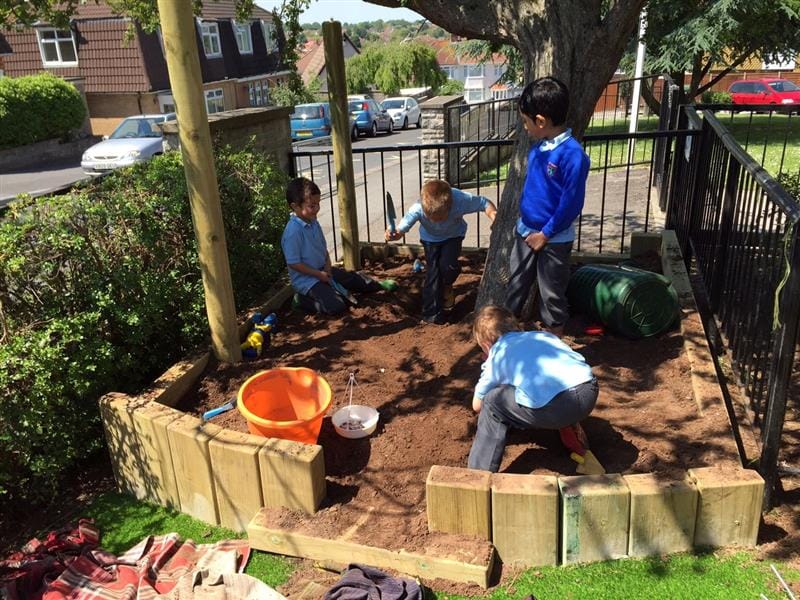
7 things to consider when designing a school playground for children with autism.
It is not difficult to create fantastic outdoor play and learning spaces for autistic children with all the different and wonderful resources that are available today.
With some thoughtful consideration to the specific issues faced by children with autism and other related special educational needs, you can provide exciting, engaging and inspiring outdoor learning environments that really serve their purpose when it comes to connecting children with nature, with each other and with the wider world.
Well-designed outdoor learning spaces can offer children one of the most important things of all - an opportunity to have therapeutic fun and enjoy life in a safe and accepting environment. It’s what we all want in the end!
One of the main things to consider when it comes to planning outdoor learning and play spaces for children with special educational needs is accessibility. For children with autism, consideration really must go beyond accessibility.
Brilliant spaces allow for inclusive, nature based play and learning for all children to enjoy. They should accommodate a range of experiences and address a variety of issues including limited fine and gross motor skills, and cognitive and sensory impairments.
Children with autism often have heightened sensory issues, meaning outdoor learning spaces must be comfortable and supportive for them to allow them to build up skills successfully. Here’s how to do it:
● Consider location - try to build the outdoor learning space in an area that is relatively quiet, because lots of different noises from different sources can be overwhelming.
If this is difficult due to positioning, roads, built up areas etc, then edge the area with fences and trees, that provide natural screening from outside distractions and absorb sound.
Trellis Fencing is brilliant because it offers a tall and more natural screen and you can grow climbing plants up it or plant trees and bushes against it. It is important to provide shade either from trees or shade structures as many autistic children are sensitive to strong light.
● Build in quieter, comfortable and soothing areas - children need somewhere to escape when they are feeling overwhelmed or just want some peace and quiet. Make it comfortable and cosy with some Playground Seating, hang hammocks and drape blanket sails to provide shade and screening.
Edge with planters filled with a variety of plants, herbs and flowers with different soothing colours, scents and textures and plenty of “green”. It is best to build these “quiet zones” nearer to the classroom exit to encourage children to make the move outside, and make sure that they offer a partial view of the rest of the playground so that children have an outdoor place to observe and make the transition to other activities when they are ready.
● Accessibility - Smooth Playground Surfacing is important for children with mobility issues. It should be anti-glare as children with autism are often sensitive to bright light. Pathways need to be wide to avoid a feeling of overcrowding which can be intimidating for children with autism.
Pathway edges and any steps should be clearly marked so that children with visual impairments know that they are there.
● Provide visual aids, signage, symbols and orientation maps - Map out the playground. Non-verbal children often use a picture and symbol exchange system to communicate, so continue this in the playground. Include simple pictures and Braille.
Orientation maps which illustrate the layout of the outdoor space help autistic children to anticipate where they are in relation to the rest of the grounds and what is coming next.
This helps to avoid unwanted surprises that can cause anxiety, as children with autism can be uncomfortable with change. Clear signage and maps help them to adjust.
● Get gardening - Gardening is a fantastic resource that provides opportunities for increased socialization. It is brilliant because it encourages small group and one to one interaction. Planters, Digging Areas and Wildlife Areas all serve this purpose and offer endless enjoyment. These activities help to increase fine and gross motor skills, body awareness, and motion.
They are also a way of helping children to overcome sensory issues as they allow children to become familiar with different colours, shapes, scents and textures in a safe environment with regular and consistent exposure. All this while providing the calming connection to nature that really supports children with autism and ADHD symptoms.
● Quality playground equipment - encourage children to exercise and provide opportunities for improving fine and gross motor skills, balance and coordination. A Trim Trail is perfect for this as it offers opportunities for climbing, swinging and balancing in a staged and sequenced structure, so children can become comfortable with moving along the stages as they are ready.
Include some Playground Markings as well as solid structures to provide educational walking challenges that don’t have to involve climbing or running.
● Incorporate fixed elements to the outdoor space - things that are unpredictable can be intimidating for autistic children, so it’s good to have several items that don’t change, such as furniture locations, or items that contain a comforting and predictable sequenced pattern such as a hedge, or a fixed Activity Play Panel.
Build up challenge by introducing movable elements near to but set apart from the fixed elements, so that children have the sense of security that they need, but can gradually overcome some of the fears and challenges that they face by moving onto changeable areas (such as outdoor building blocks or moving vehicles).
It’s about helping children to encounter and deal with everyday life situations that they might face, giving them appropriate challenges to overcome by themselves but in a supported environment.
Social stories can also help break down challenging social situations into steps for children to overcome. Children with Autism can learn to identify social cues in paticular situations, understand other people's point of views and follow school rules and routines. They are easy to write and effective for children with Special Educational Needs. Read more about how to write effective social stories for children with SEN.
For more information and advice on designing outdoor learning spaces to support children with autism and other special educational needs, Contact Us through the website and we'll arrange a free consultation. Click here to see our range of outdoor learning products to suit all levels of ability.
